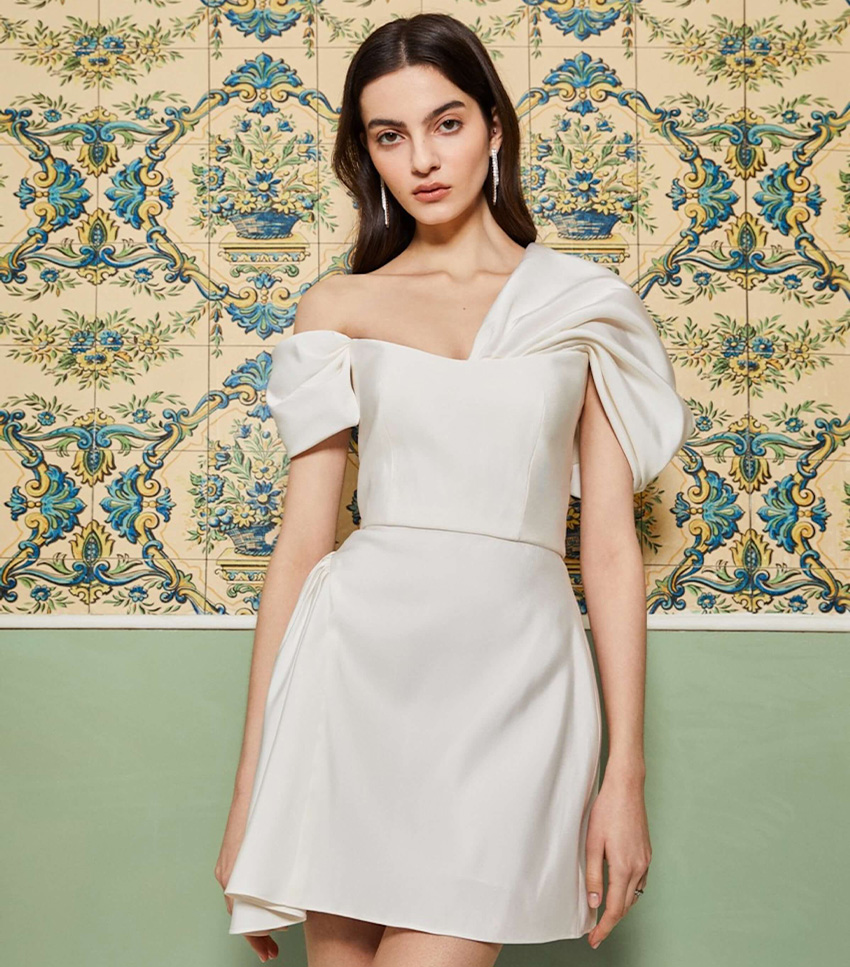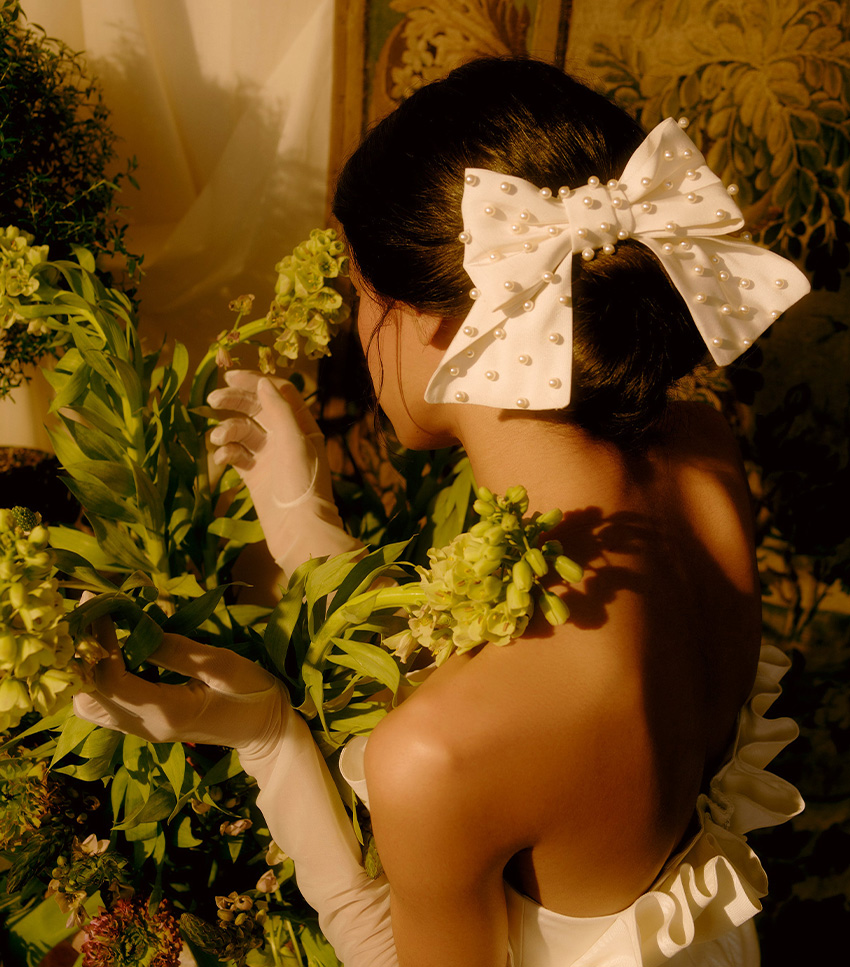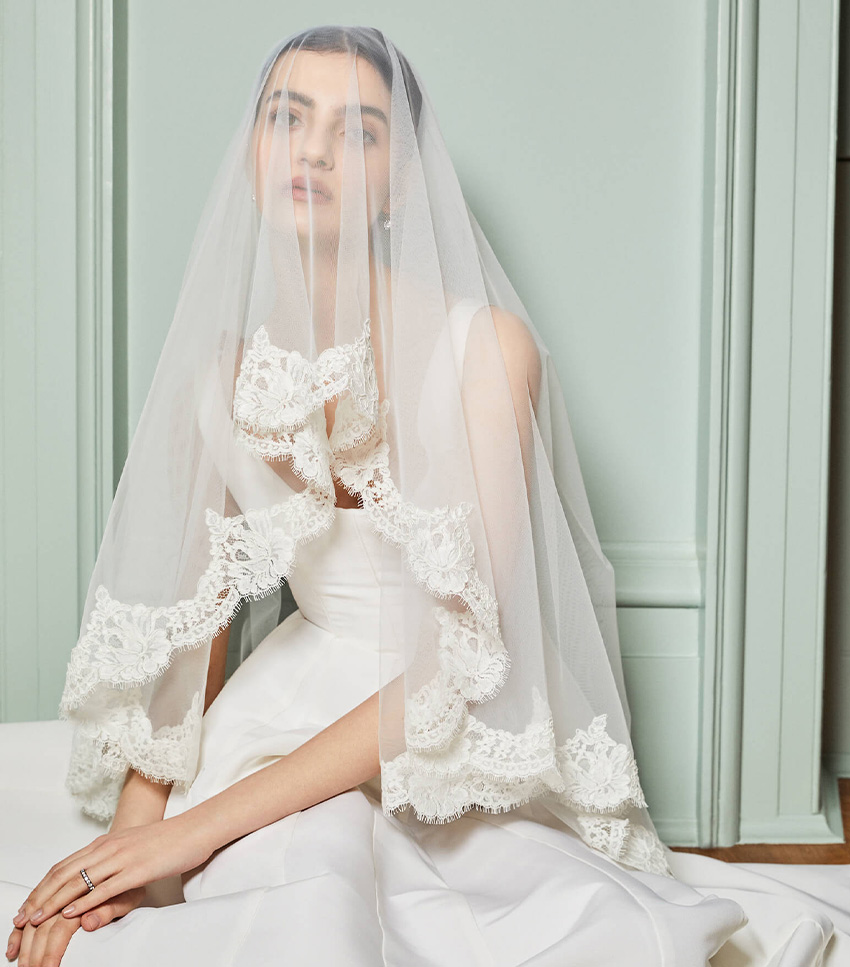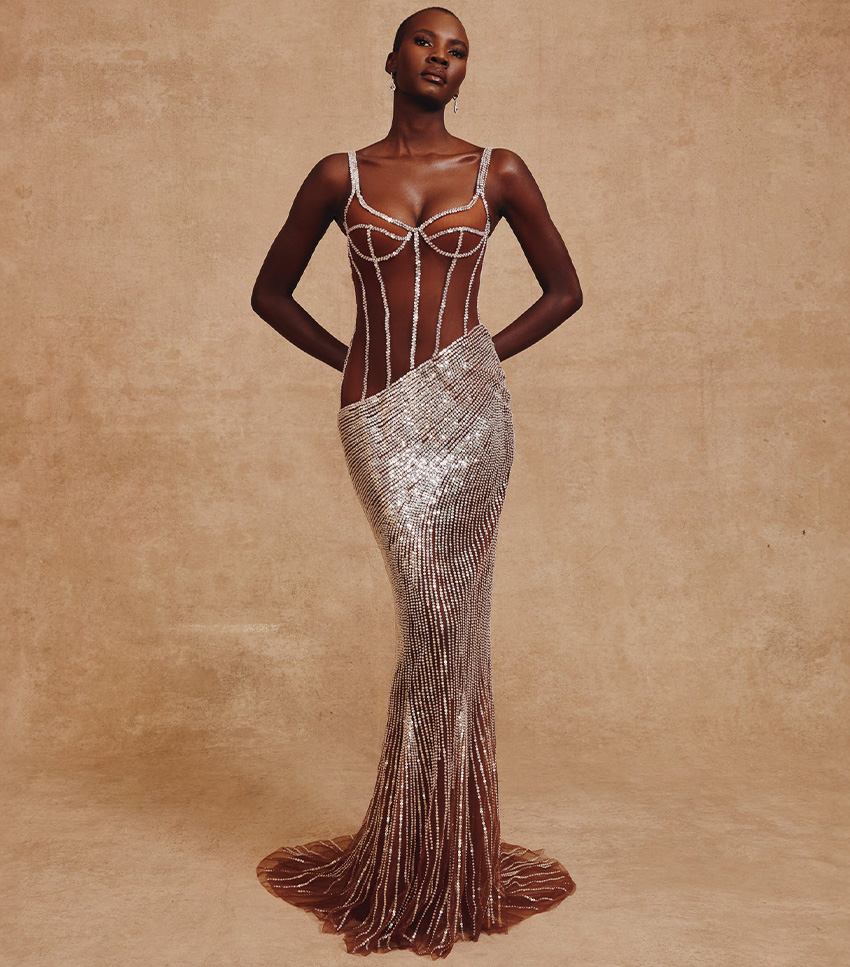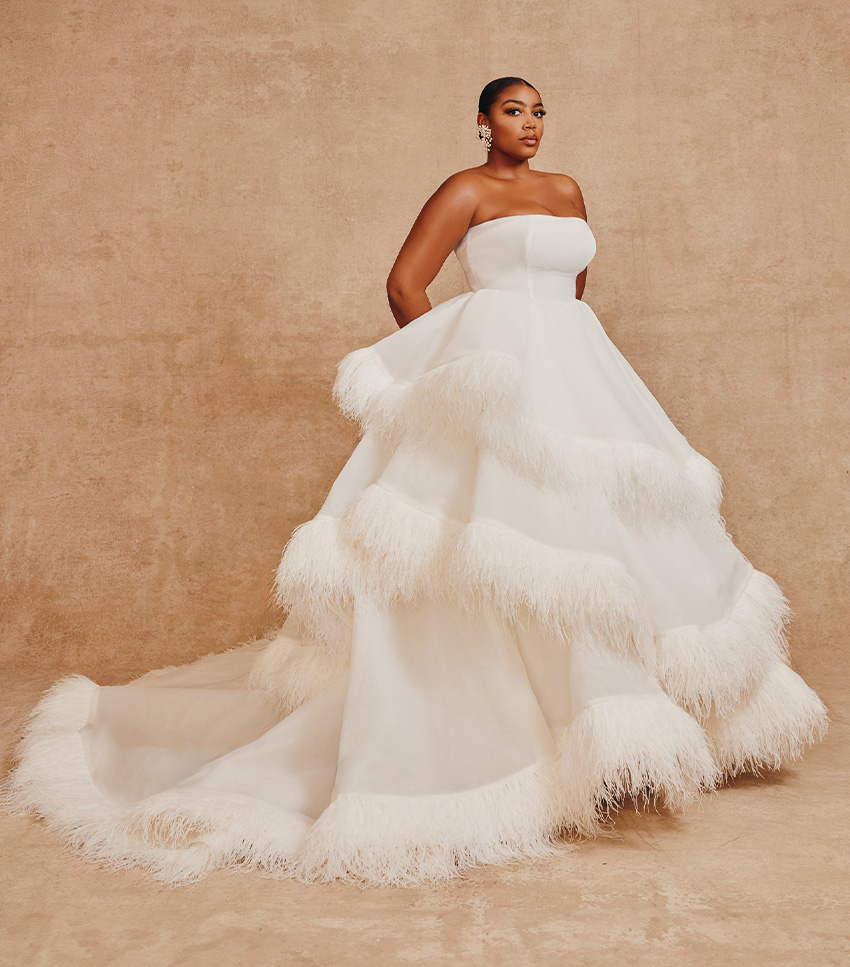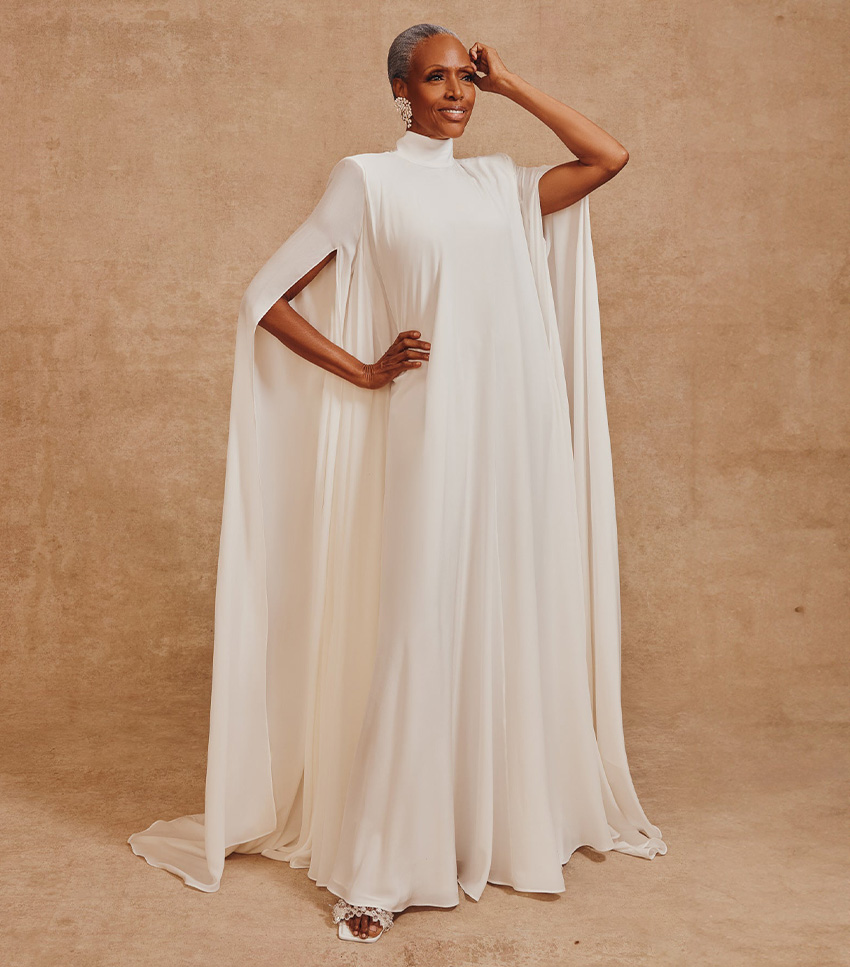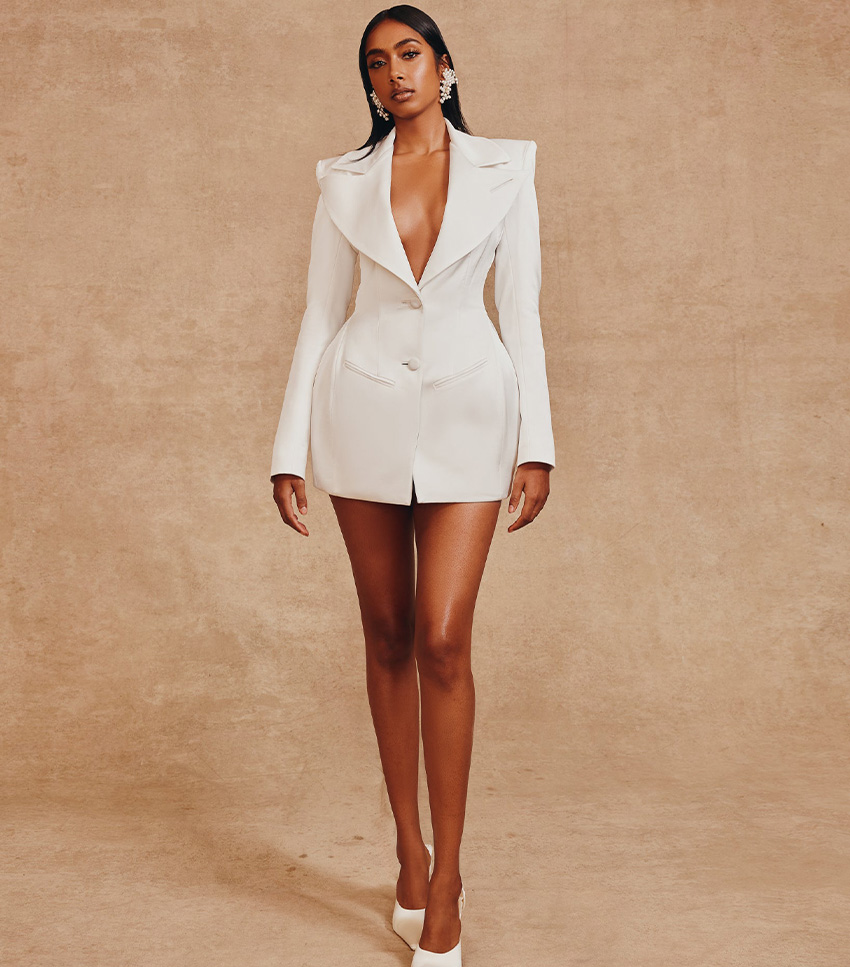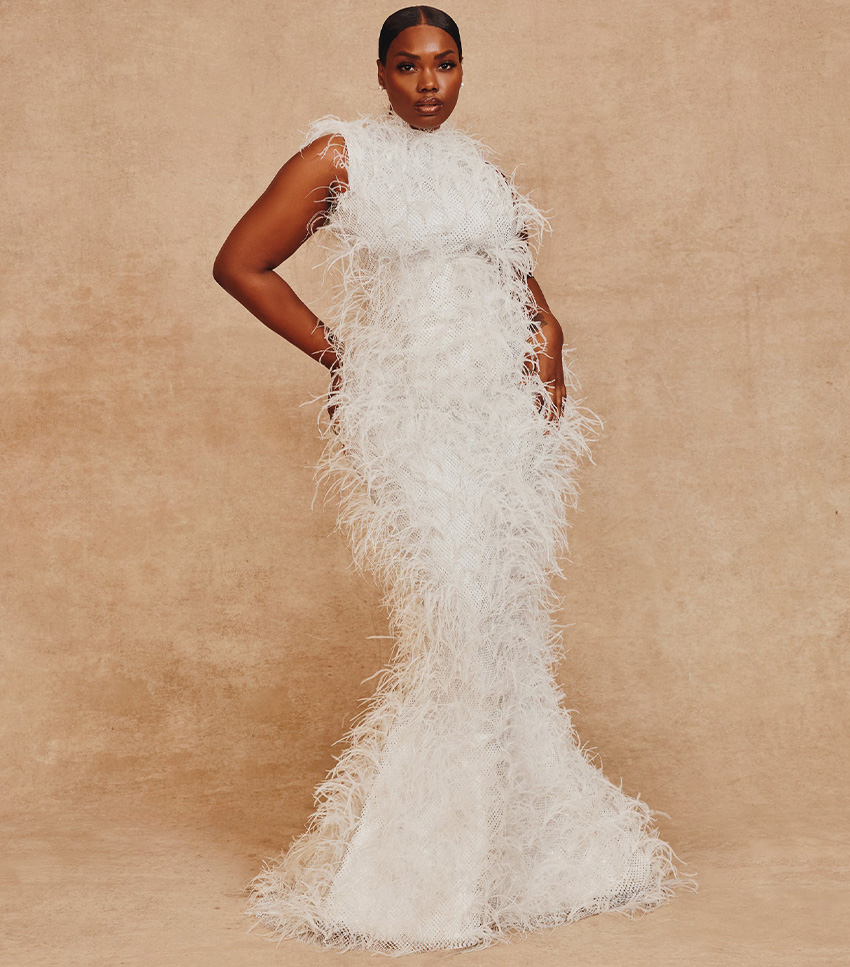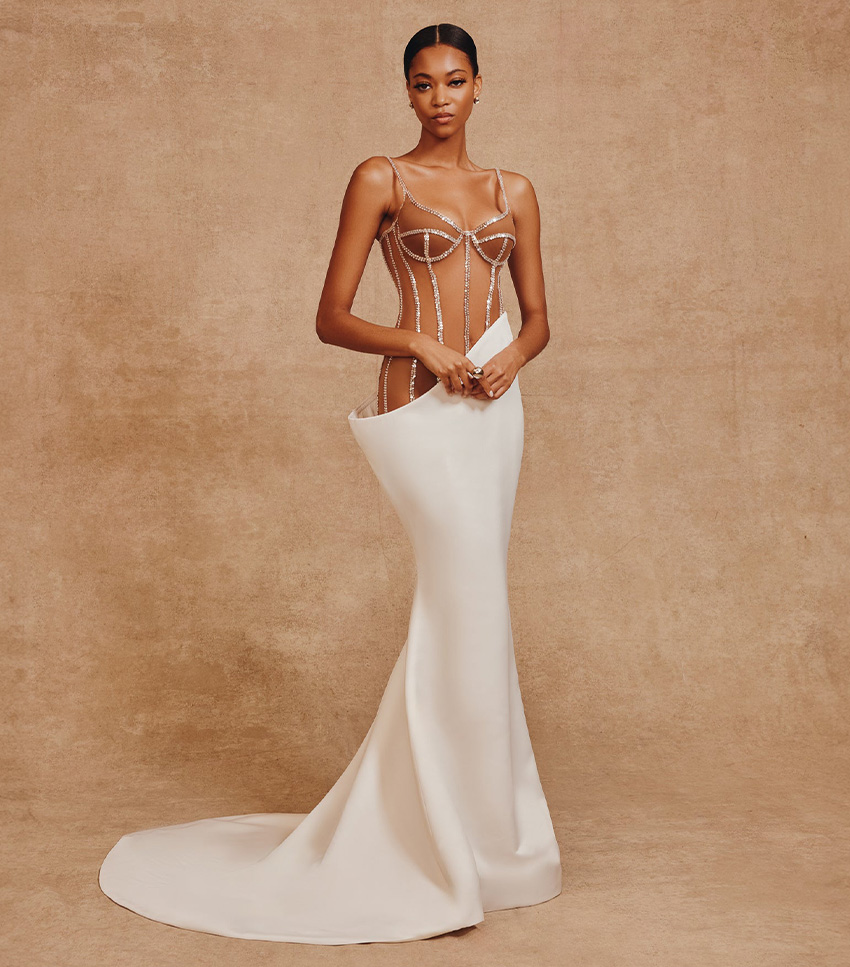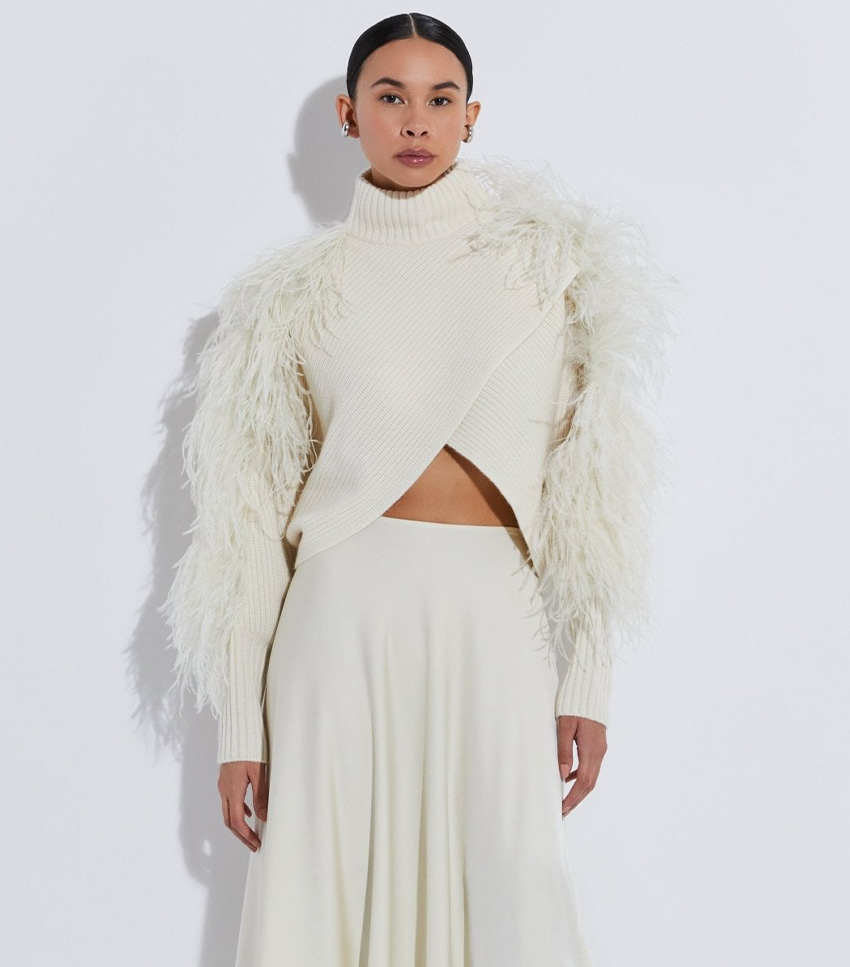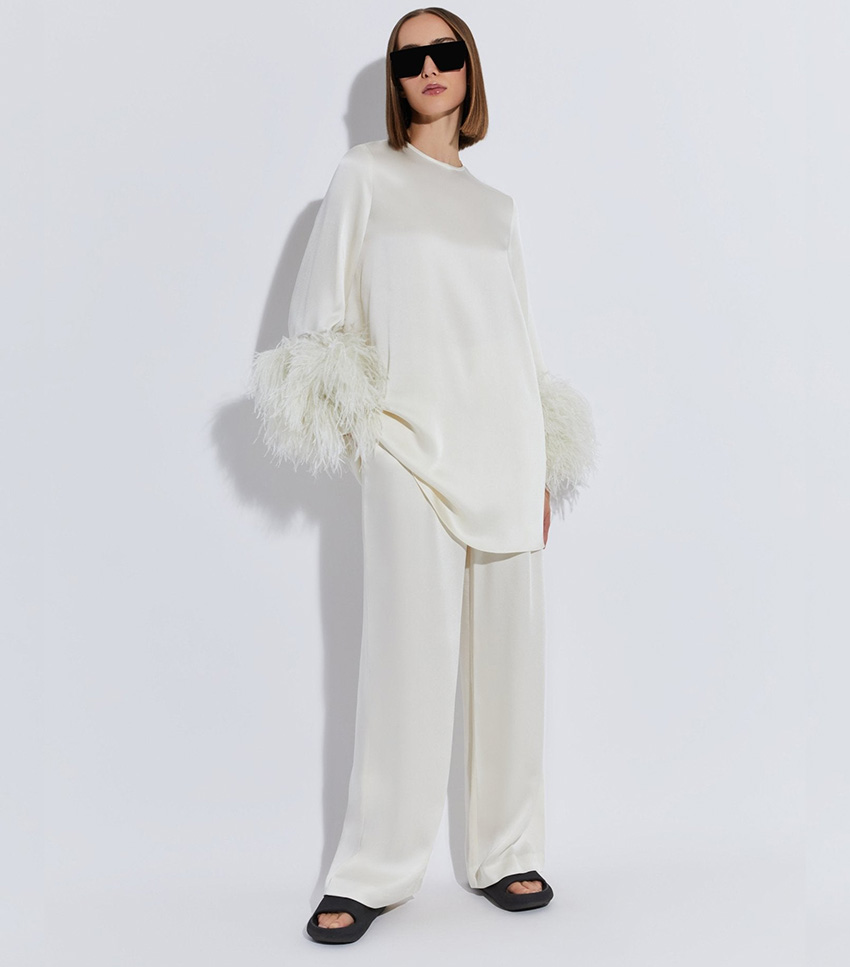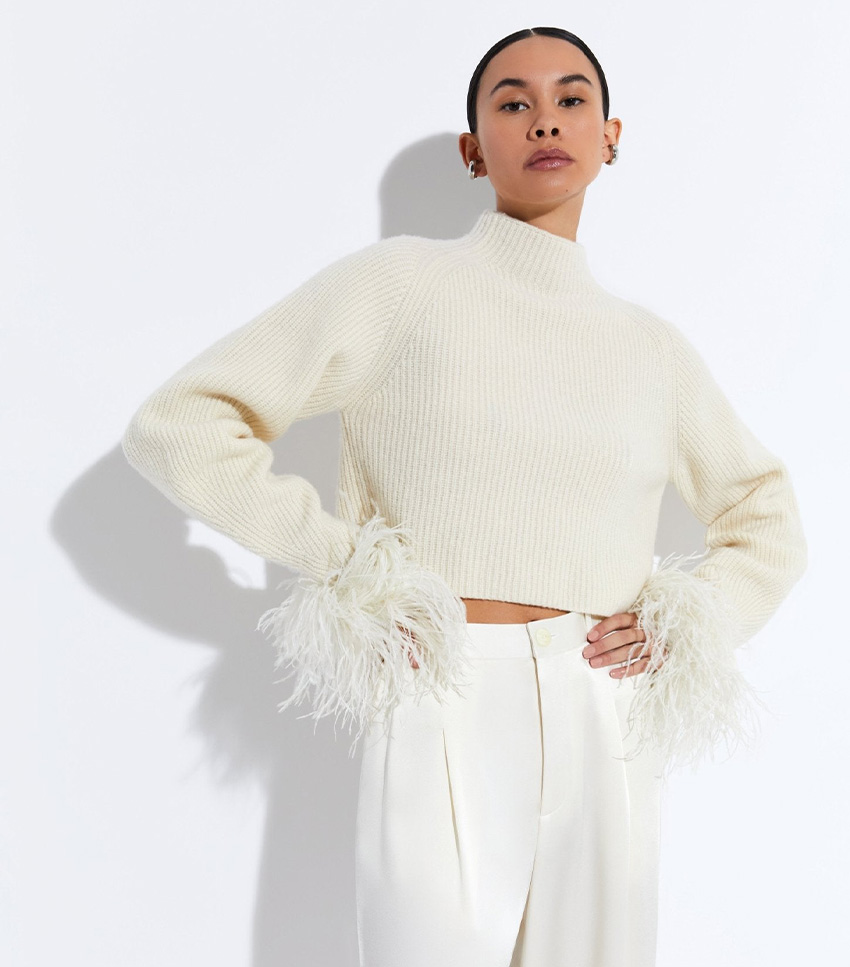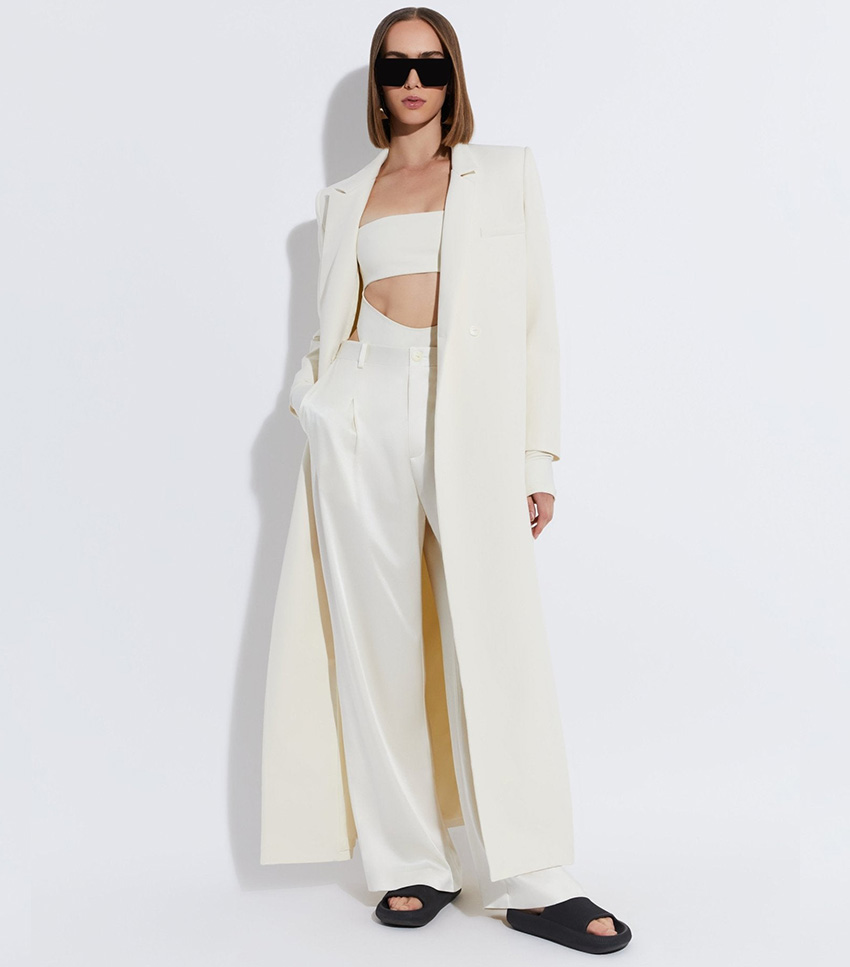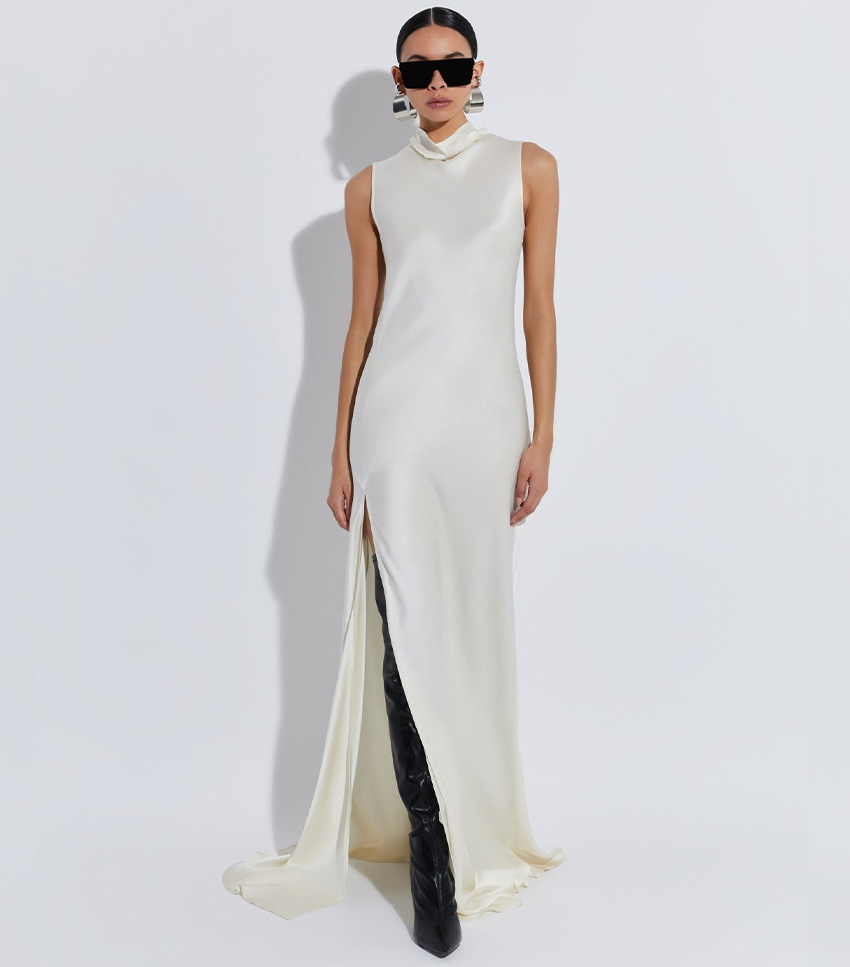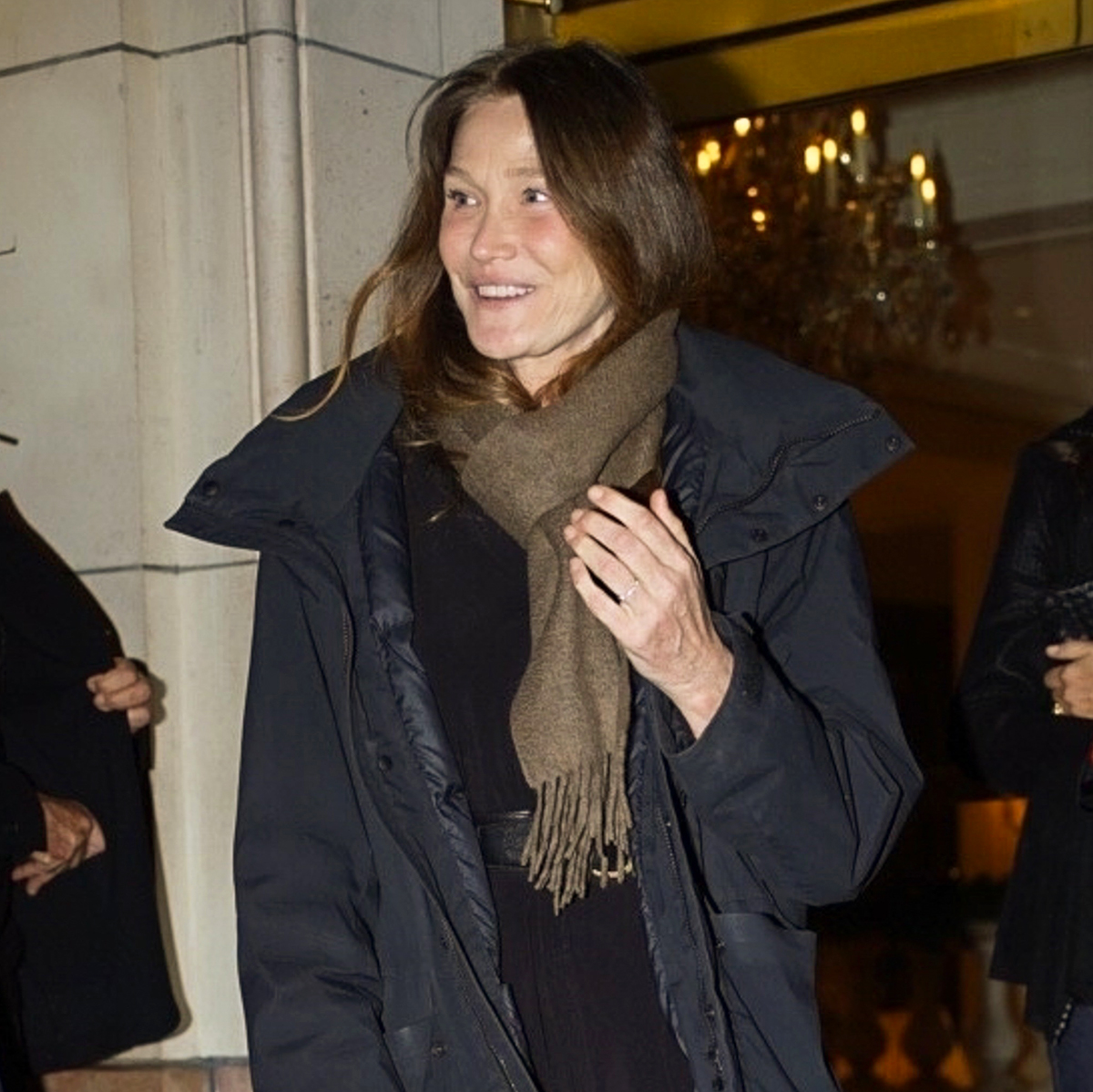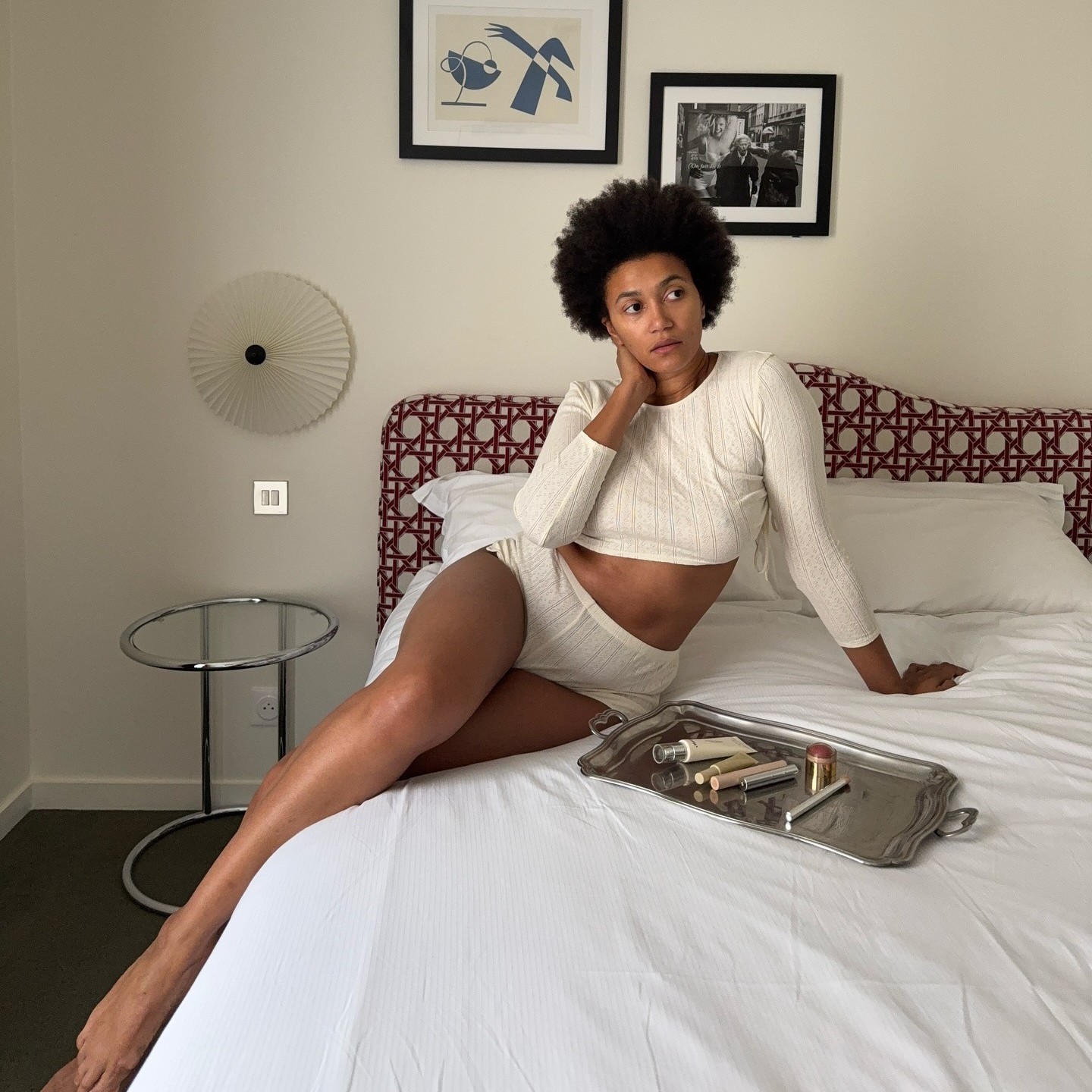Bridalwear Is Booming, and These 3 Fashion Brands Want a Piece

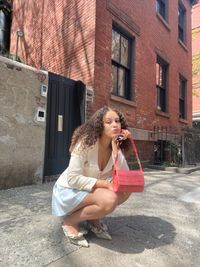
A conversation on any given day with a family member, close friend, or even acquaintance would likely include a casual mention of a wedding. Of course, people have been getting married for a millennium, so it's not exactly the freshest topic in the group chat. But within the past three years, how we collectively speak about weddings feels more weighty than a casual conversation. There are several factors at play as to why the topic of marriage feels inescapable. One could be how the glitzy weddings of A-listers like Sofia Richie Grainge have dominated our feeds. If we're being honest, there's something bigger underfoot—the force being the massive disruptions caused by the onset of the COVID-19 pandemic.
Akin to every other facet of our lives, the wedding industry underwent massive changes during that time that we're still witnessing to this day. From that disarray has come a wave of demand that has contributed to a boom in the industry. It's estimated that 2.5 million couples chose to tie the knot last year, which was 15% higher than the average marriage rate, according to The Wedding Report. While some of that bump could be attributed to all the engaged couples who were forced to postpone their weddings early on in the pandemic, experts have hinted that there will likely be another wave of engagements in 2024 because of all the couples that paired off at the beginning or shortly after global lockdowns. It comes as no surprise that the sheer number of ceremonies would shift how we collectively perceive, talk about, and plan weddings.
We'd be remiss if we only attributed change within the industry to extraneous circumstances, as there's a set of creatives doing their part in ushering in a new era. Many designers have launched bridalwear collections, including Sandy Liang, Wiederhoeft, and Staud. The new trend of traditionally trained ready-to-wear designers dipping their toes into the bridalwear market isn't unexpected, especially considering that the industry is estimated to generate up to $83.5 billion globally by 2030. For many, expanding into bridalwear makes sense for the bottom line, but for others, it's something that's beyond that.
A select few designers are using their bridalwear to break traditions—chief among them are Alexandra O'Neill of Markarian, Anifa Mvuemba of Hanifa, and Sally LaPointe of LaPointe. Each of them brings their unique design perspectives to an otherwise highly traditional industry, so of course, we had to speak with them. Ahead, you'll hear from them about their decision to expand into bridalwear, what their labels bring to the market, and what they think the industry's future holds. Consider their work proof that bridal is booming and better than ever.
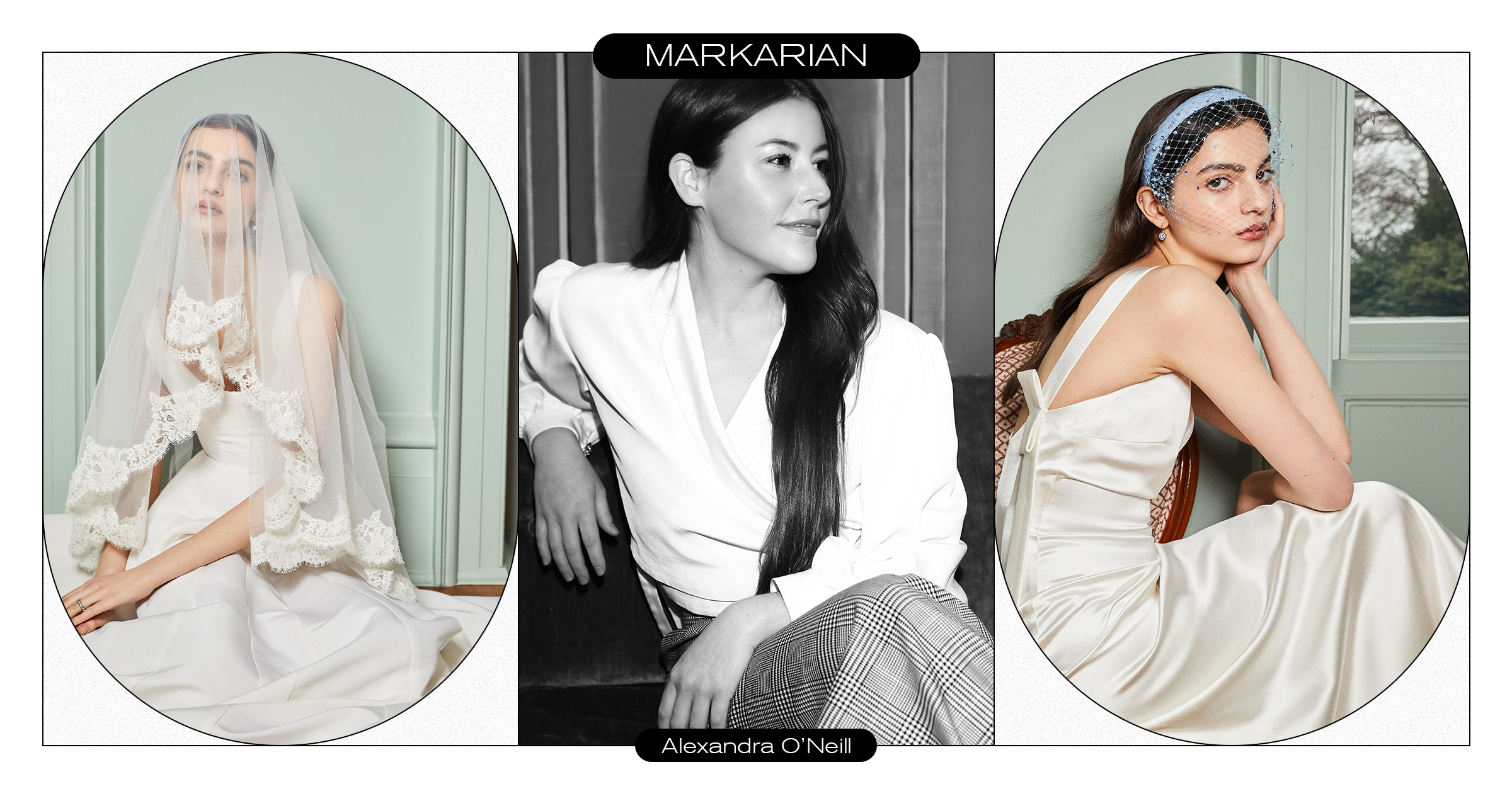
About the brand: Founded by Alexandra O'Neill in 2017, Markarian began as a luxury womenswear label that is celebrated for its collections that center craftsmanship and classic silhouettes. As O'Neill built the atelier, she received so many made-to-order requests for attire in all white that she decided to launch a dedicated bridalwear collection in 2018. Her gowns have become some of the most coveted pieces among the fashion crowd.
For those who are unfamiliar with your work, how did you come to work in fashion? What drew you to the design aspect of the industry?
My grandmother taught me how to sew when I was younger, and I fell in love with making clothing then. I always knew that I wanted to design and never pictured myself doing anything else. It felt like the right move when I decided to start Markarian.
You founded Markarian in 2017—what compelled you to start a brand? How do you feel the brand has evolved over the years?
It is something that I had always been interested in doing, but I wanted to make sure that I was going to do it in an intentional way that felt different from what was out there. I wanted to create something that was the opposite of fast fashion that our clients could be involved in and excited about. From the beginning, we always offered a customization service and made every piece to order in New York's Garment Center. This is something that we still do today and continue to grow.
Speaking of evolution, you decided to make a foray into the bridal space in 2018—what compelled you to launch a bridal collection? What do you feel the brand brings to the space that might have been missing before?
Part of the customization process naturally lent itself to creating pieces specifically for brides. We had enough people come in asking for pieces in white that it made sense to offer bridal as well. It is one of our favorite parts of the business now because we get to work so closely with our clients.
We've seen the largest cultural shift around how weddings are perceived and planned in the past few years—what do you feel has contributed to that change? How, if at all, do you feel the brand is helping contribute to that change?
Our client is definitely looking for something that has less of a traditional feel. Brides are looking for something that feels more like them and their personal style instead of letting a dress overwhelm or consume them. I think that makes brides feel more comfortable and less fussy, which may have something to do with the comfortable styles that emerged from the pandemic. I also believe that younger generations are looking for something that is more tailored to their personal preferences and style. Their weddings give them a stage to show off their own style. More brides are also having multiple looks over longer weekend celebrations, so even if their main dress is on the more traditional side, they have opportunities to have more fun with their other looks.
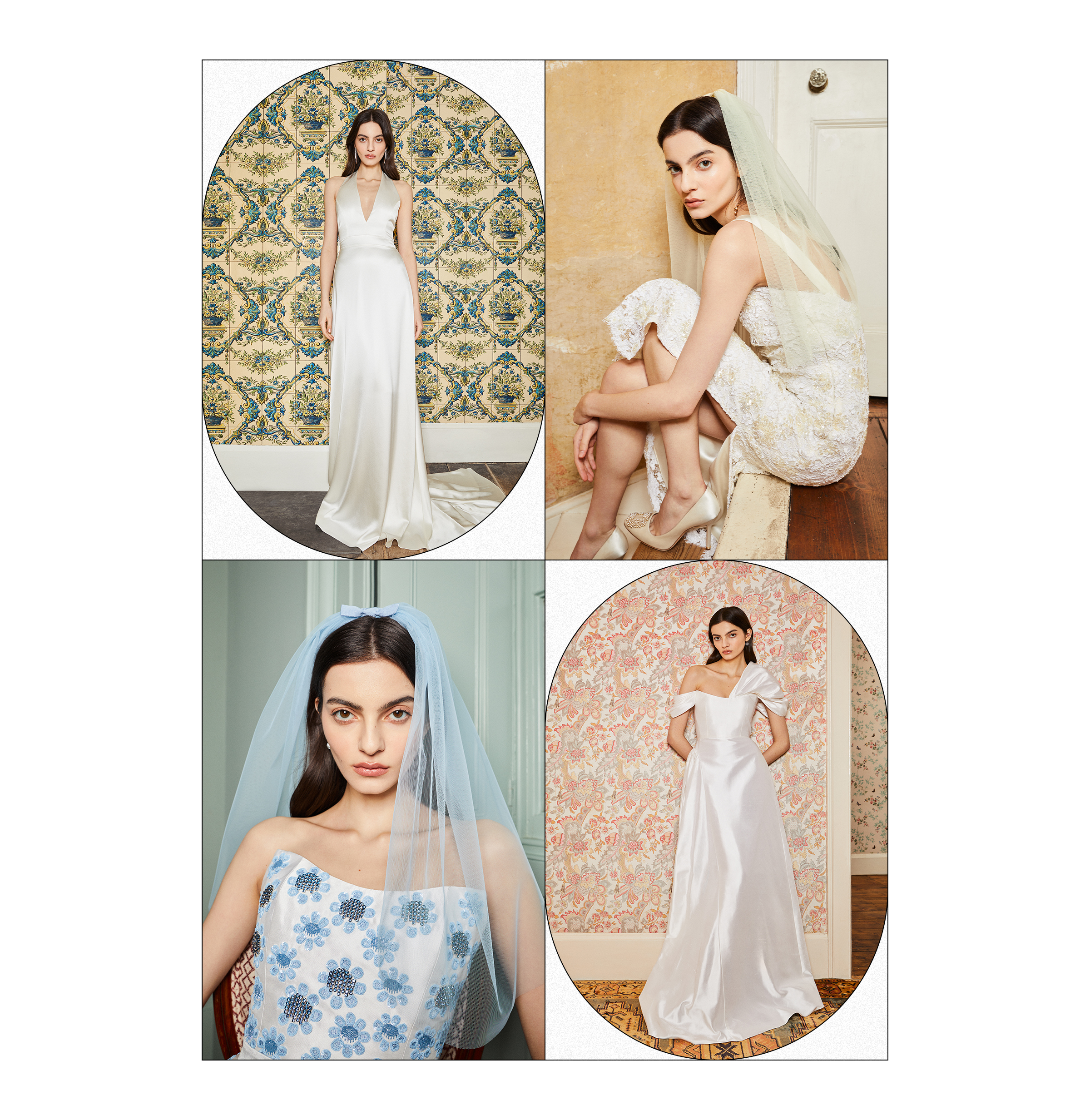
How would you describe the aesthetic world of your bridal collection? Who is the Markarian bride?
It is very much in the same world as our ready-to-wear collections. Each piece is made-to-order specifically for our clients, with our clients. The collection is feminine, ethereal, and timeless while maintaining modern details.
You just released your spring/summer 2024 collection—what was its driving inspiration? Are there items from the collection that you particularly love?
I was loosely inspired by Botticelli's "Birth of Venus" for spring/summer 2024. I loved the combination of the romantic florals of land and the frothy elements of the sea. I love our gowns from the collection, which would also translate beautifully into bridal.
What we love about your work is that it does not adhere to that cookie-cutter bridal look that has become associated with wedding attire. What advice would you give readers trying to escape the pressures they might feel to adhere to traditions associated with planning a wedding?
Similarly to when I started Markarian, I wanted the bridal line to feel different from what was out there. I wanted it to be fashion-forward and exciting while still remaining timeless and classic. Bridal can be a tricky market to enter into because of that cookie-cutter bridal aesthetic that has been predominant for so long. I wanted it to feel very Markarian when I launched it. For brides, I think it is really important to stay true to yourself and your personal style on your big day. Feeling uncomfortable and fussy will show in all of your photos and to your guests. You are celebrating such a beautiful day in your life—it should feel like you and feel natural.
Finally, what are your hopes for the future of the bridal industry? How do you envision Markarian revolutionizing how we dress for weddings?
I hope that people continue to have more fun with bridal dressing and find interesting ways to put a twist on the traditional. I see Markarian evolving and encouraging brides and guests to make choices that feel like them and to work with the brand to bring their personality to every aspect of bridal dressing.
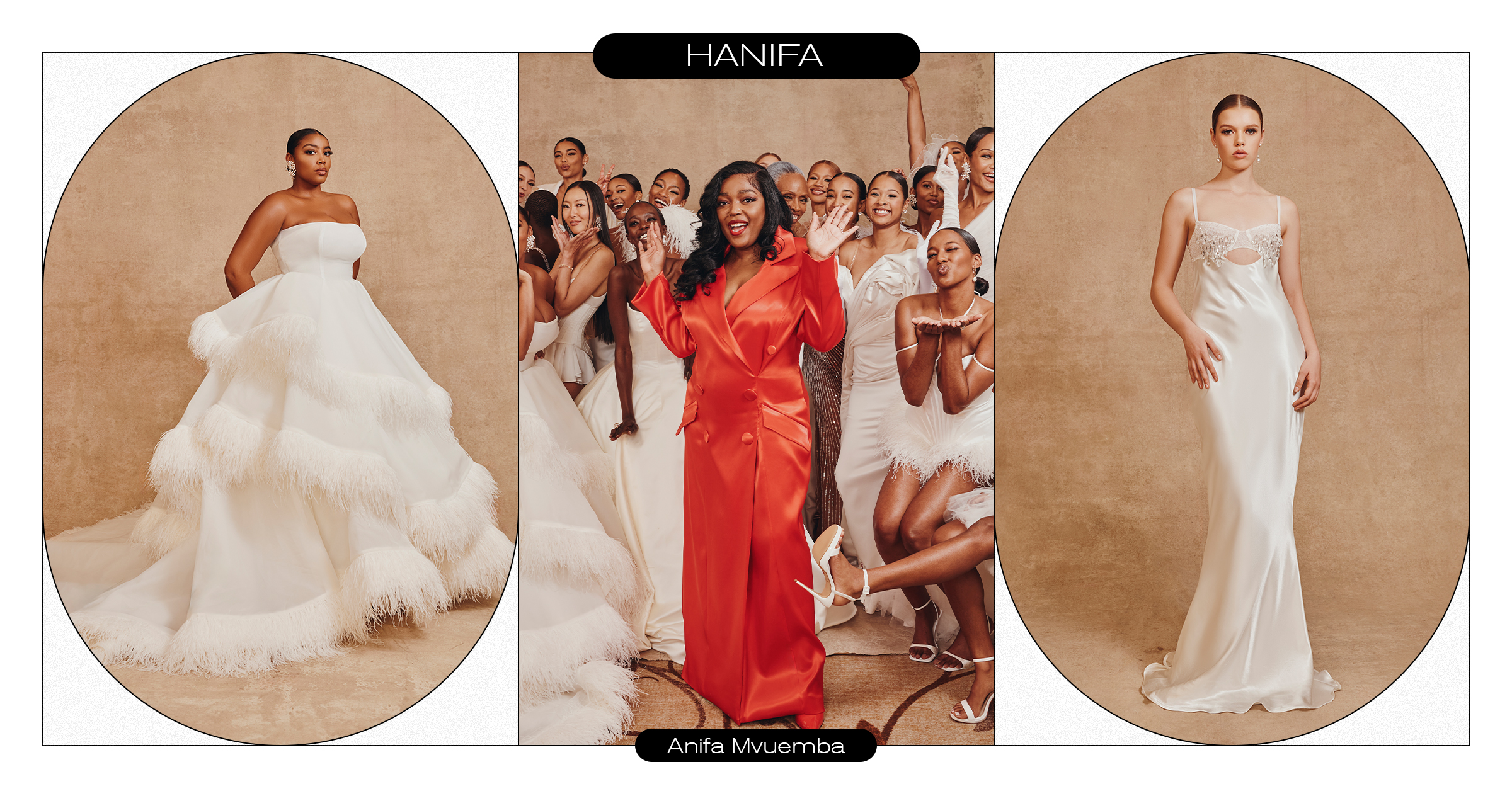
About the brand: If you consider yourself a part of the in-the-know fashion crowd, then you're no stranger to Anifa Mvuemba. Since she launched her namesake label, Hanifa, she's distinguished the brand from the luxury industry from the jump by championing a size-inclusive offering that reimagines staples through deconstruction, color, and texture. Her unique, distinctive take on ready-to-wear has translated into a desire to design bridalwear, which debuted just last month.
For those who are unfamiliar with your work, how did you come to work in fashion? What drew you to the design aspect of the industry?
I was drawn to fashion at a young age. As a child, I remember watching my mom get dressed for work in the mornings and waiting to raid her closet. She was my introduction to style, and I took inspiration from her well-tailored suits that later inspired some Hanifa pieces. Although I never went to design school, I embraced the fashion all around me and started working through my passion to build a brand that reflects that.
You founded Hanifa in 2012—what compelled you to start a brand? How do you feel the brand has evolved over the years?
While working in retail and learning the business of fashion, I was compelled to start my brand for what I felt was missing at the time—bold, sophisticated silhouettes for women of all sizes. Naturally, we've evolved as I evolve. When I started Hanifa, I was in my 20s and in need of a birthday dress. Today, I'm a mom, a fiancé, a creative director, and a CEO. It's fitting that Hanifa Bridal launched while I am a bride-to-be myself. Over the years, I've challenged myself to reach for more while embracing the ongoing life changes. I'm always thinking about new ways to connect with the Hanifa woman by first connecting with myself.
Speaking of evolution, you decided to make a foray into the bridal space earlier this year—what compelled you to launch a bridal collection? What do you feel the brand brings to the space that might have been missing before?
Launching Hanifa Bridal has truly been a full-circle moment. My brand began by taking custom orders and making some bridal looks for clients, and I have been looking forward to the moment when I could produce an entire collection. This collection represents the culmination of my years of experience in curation, attention to detail, and exploration of the theme of love. I feel that Hanifa Bridal brings self-love to the space, emphasizing the importance of self-worth before marriage and drawing inspiration from the bride of Christ as a symbol of devotion and grace.
We've seen the largest cultural shift around how weddings are perceived and planned in the past few years—what do you feel has contributed to that change? How, if at all, do you feel the brand is helping contribute to that change?
I feel that this generation of brides doesn't want to be boxed in within any facet of their lives. They want their day to truly be "their" day in the purest form of what makes them feel beautiful and serene. As a brand that encourages our customers to envision their highest, most authentic selves, I like to think that we're leaders in the space of helping women to feel seen. I also think that's the reason for the shift—women valuing themselves above all.
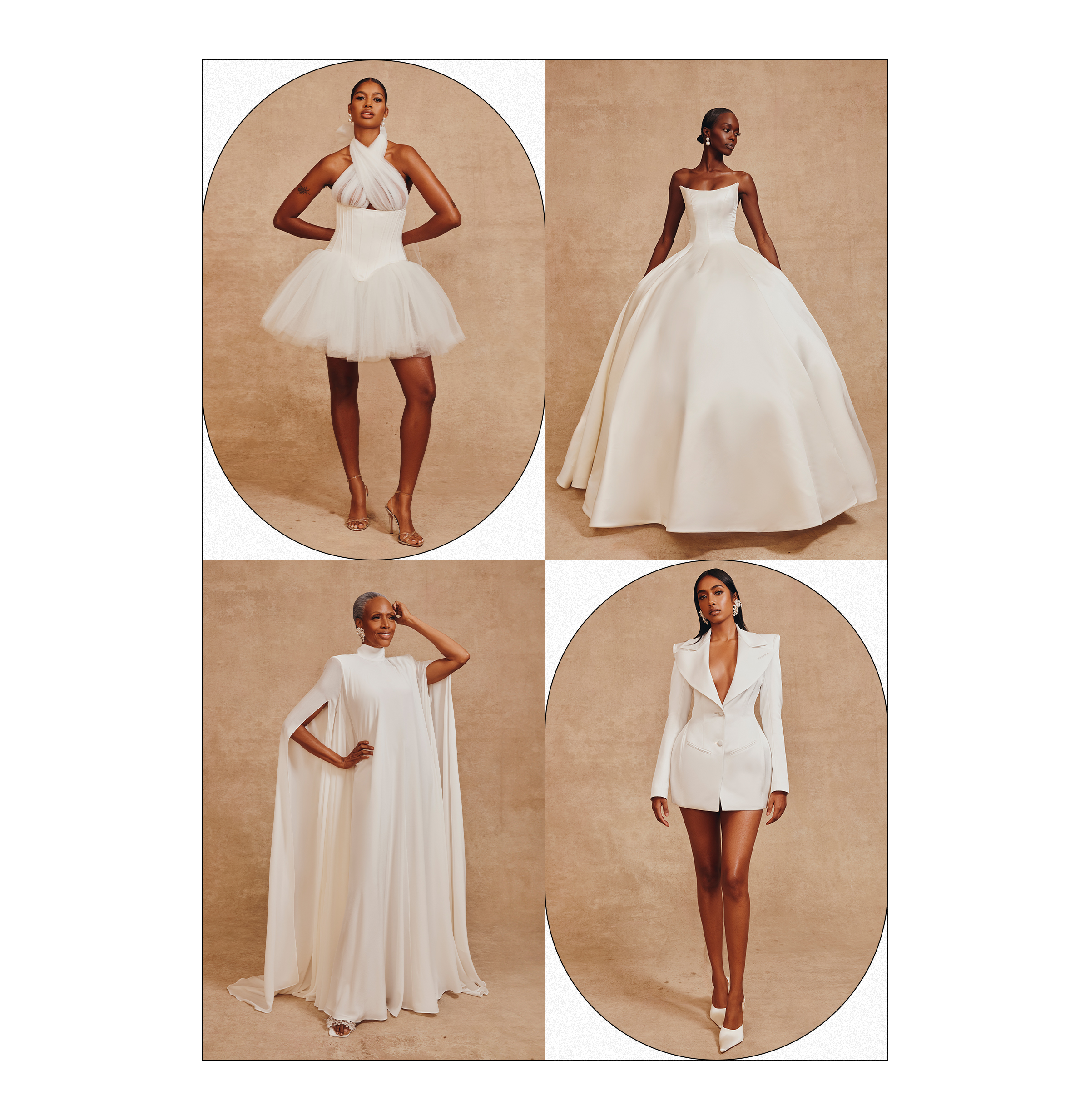
How would you describe the aesthetic world of your bridal collection? Who is the Hanifa bride?
The world of Hanifa Bridal is a journey toward self-discovery, self-acceptance, and love. Our bride is classic yet modern in taste—they are drawn to timeless and minimalist design aesthetics with an appreciation for feminine silhouettes of all shapes carefully crafted with the finest of fabrics, elegant gatherings, drapes, delicate feathers, and more to enhance the allure of each look. They prefer clean and understated elegance over elaborate embellishments. They embody someone who admires the brand's ability to create simple yet sophisticated wedding dresses, with attention to timeless silhouettes and impeccable tailoring. Ultimately, they appreciate our focus on quality and craftsmanship and desire a wedding dress that reflects the modern bride.
What was the driving inspiration behind your debut bridal collection? Are there items from the collection that you particularly love?
The driving inspiration behind our collections has always been our customers; each of our pieces tells a story, and bridal is no exception. It's honestly difficult to choose, but our finale (look 31), which is a silk satin ballgown layered in panels with feather trim, is simply breathtaking.
What we love about your work is that it does not adhere to that cookie-cutter bridal look that has become associated with wedding attire. What advice would you give readers trying to escape the pressures they might feel to adhere to traditions associated with planning a wedding?
When it's all said and done, your memories are yours and should reflect your heart. Choose a look that speaks to your soul. The rest doesn't matter.
Finally, what are your hopes for the future of the bridal industry? How do you envision Hanifa revolutionizing how we dress for weddings?
We hope that brides will feel seen in our intricate designs. The essence of Hanifa isn't only in the garments we create but also in the relationships we build with our customers. We understand the significance of each moment in their lives, and we strive to design pieces that accompany them every step of the way. We are honored to be a part of their special moments, and our debut bridal collection is only the beginning of this commitment.

About the brand: Even if you think you're not familiar with LaPointe, you've definitely seen it before. Founded by Sally LaPointe and Sarah Adelson in 2010, the brand has become synonymous with statement items one would want to wear to be the main character in their life. With collections featuring hand-embroidered feathers, supple satin, and sultry necklines, it comes as no surprise that consumers began wearing the items for their wedding days, which sparked LaPointe's desire to launch a bridalwear collection earlier this year.
For those who are unfamiliar with your work, how did you come to work in fashion? What drew you to the design aspect of the industry?
I was classically trained as an oil painter from a very young age. It was only when I enrolled at the Rhode Island School of Design that I opened up to the fashion world. I joined the school's fashion program. I was just drawn to the vibe of it. After taking a few classes, I thought to myself, "I can do this," and I have been ever since.
You founded LaPointe in 2010—what compelled you to start a brand? How do you feel the brand has evolved over the years?
I always knew I had something to say, and I felt my own brand was the way to do it. My best friend (Sarah Adelson) and I also knew that between the two of us, we could make it work. So we started the brand together. Adelson handled the logistics, and I was behind all the creative aspects of the brand. Together, we have worked endlessly to nurture and grow the brand in an authentic way that we feel is true to both of us. We both always say that we have come a long way, but the brand DNA is still the same from day one.
Speaking of evolution, you decided to make a foray into the bridal space in 2022—what compelled you to launch a bridal collection? What do you feel the brand brings to the space that might have been missing before?
I saw brides wearing my cream pieces as bridal and just thought, "Wow, that's perfect!" I don't do traditional bridal and believe there is a strong need for more of that voice in the market and in today's climate.
We've seen the largest cultural shift around how weddings are perceived and planned in the past few years—what do you feel has contributed to that change? How, if at all, do you feel the brand is helping contribute to that change?
As with everything in life, there is a preconceived idea of "what you should do." I've never been about that. I have constantly challenged cultural expectations by asking, "Why?" Within the context of bridal, it's something that I can really show that concept of going against the grain. Today's women are totally ready for something different. It's really cool to see that reflected in what people choose to wear on their wedding day. I think several factors have contributed to getting us to this point: A combination of younger generations now getting engaged, the pandemic, and, in general, women finding their voice has finally broken that glass ceiling.
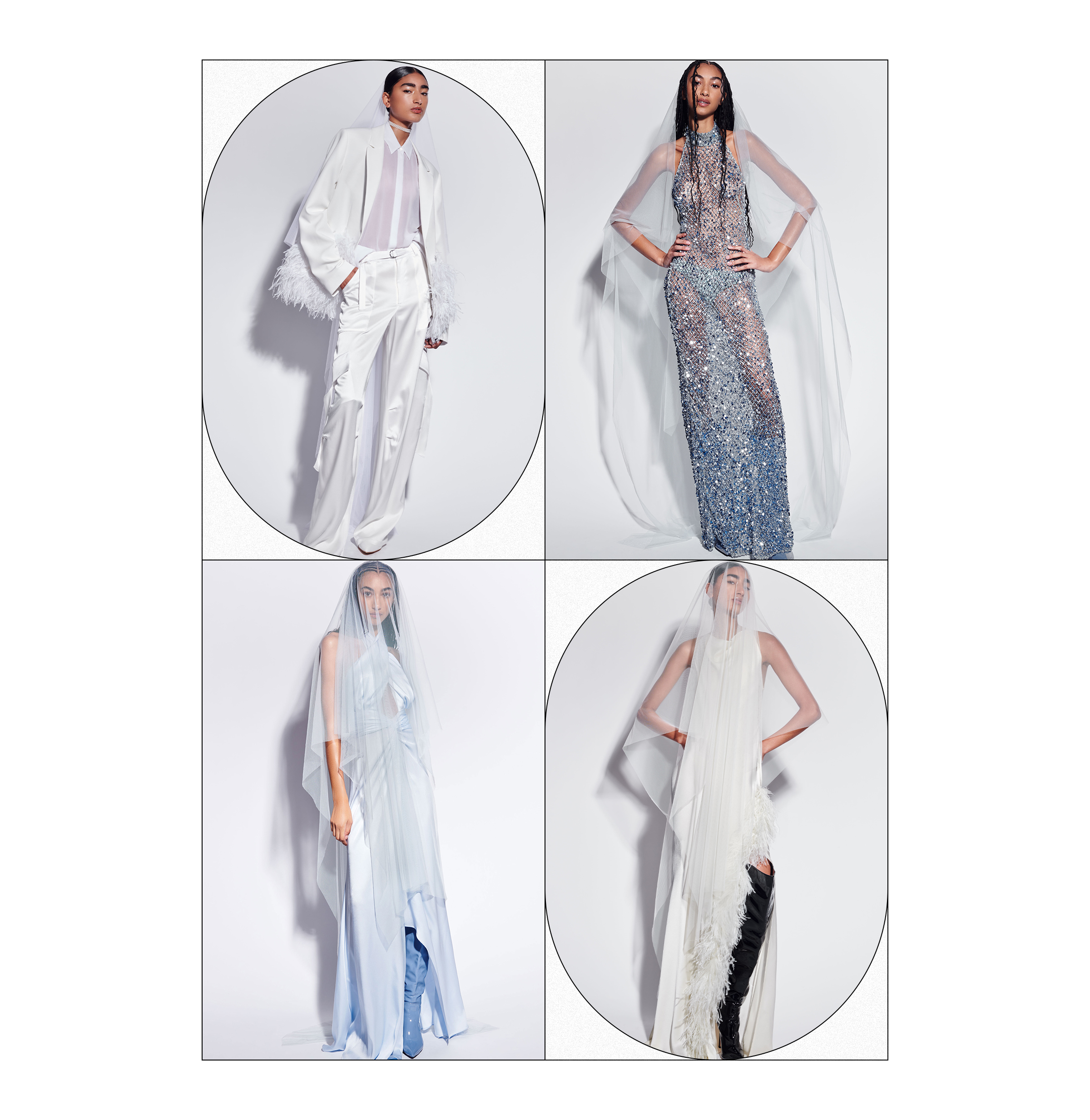
How would you describe the aesthetic world of your bridal collection? Who is the LaPointe bride?
She's the new bride. She doesn't give a fuck; she does and wears whatever she wants!
What was the driving inspiration behind your recent bridal collection? Are there items from the collection that you particularly love?
I love the idea of a pantsuit. I always have, especially for a wedding, so there are a few within the collection. But I also love offering some sexy separates, as I wanted all the pieces to be able to work together so the bride can really make it her own. Each of our collections is meant to be mixed and matched, and because so much of the foundation of our brand is in ready-to-wear, the items can be reworn long past the wedding ceremony.
What we love about your work is that it does not adhere to that cookie-cutter bridal look that has become associated with wedding attire. What advice would you give readers trying to escape the pressures they might feel to adhere to traditions associated with planning a wedding?
Life is short, honey—do you! Don't feel like you must succumb to some idea of what you "should" wear for your wedding because, at the end of the day, it's about you and your chosen life partner. Ultimately, there are so many stylish alternative options out there that it's worth deviating from the norm to find something that represents your style best.
What are your hopes for the future of the bridal industry? How do you envision LaPointe revolutionizing how we dress for weddings?
I hope women continue to discover my brand and go, "Thank you—this is what I want to feel like for my wedding. This is me." That would make me feel proud.
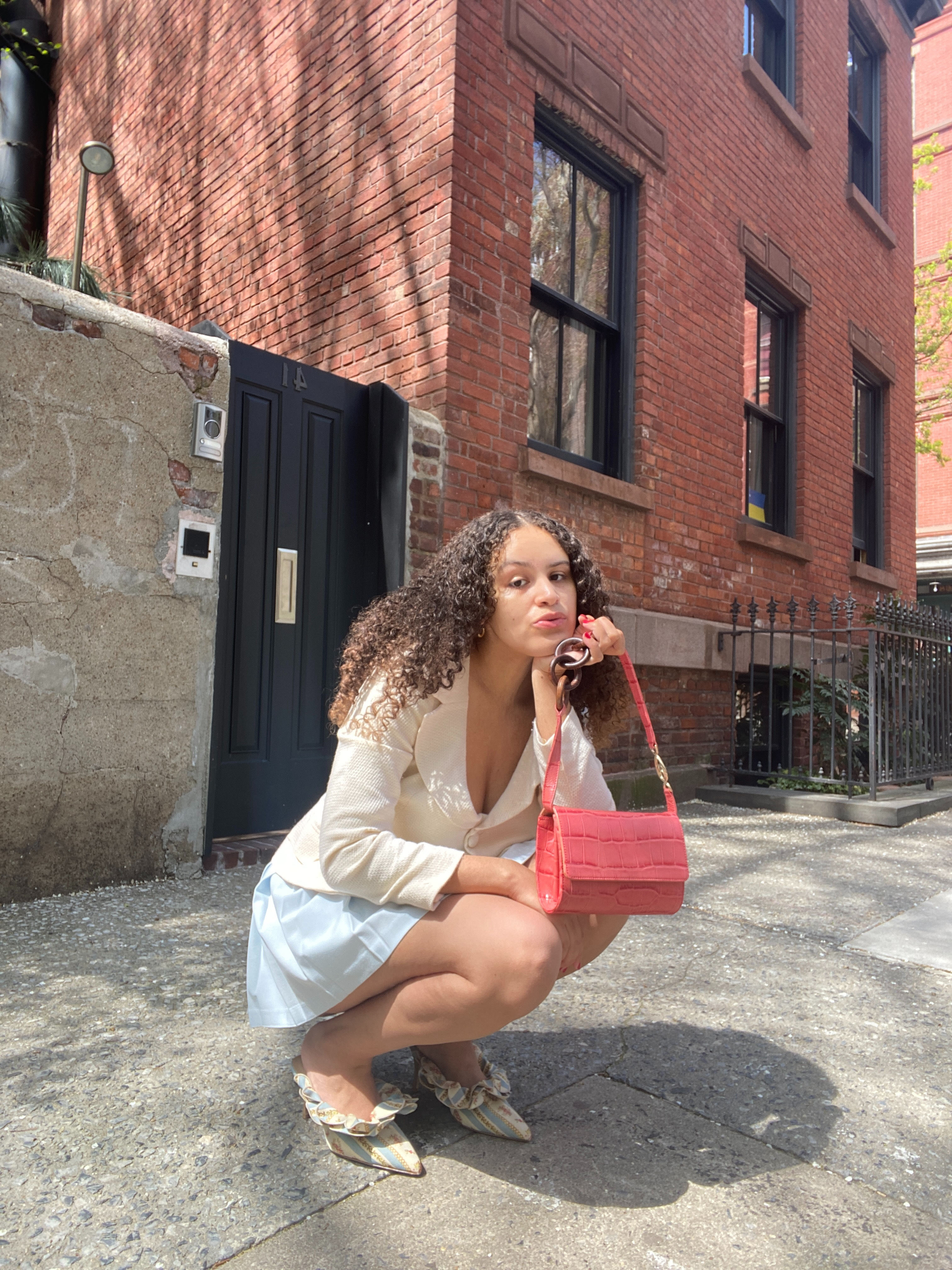
Jasmine Fox-Suliaman is a freelance writer and editor living in New York City. What began as a pastime (blogging on Tumblr) transformed into a lifelong passion for unveiling the connection between fashion and culture on the internet and in real life. Over the last decade, she's melded her extensive edit and social background to various on-staff positions at Who What Wear, MyDomaine, and Byrdie. More recently, she’s become a freelance contributor to other publications including Vogue, Editorialist, and The Cut. Off the clock, you can find her clutching her cell phone as she's constantly scrolling through TikTok and The RealReal, in search of the next cool thing.
-
 Queer Brides Are Shopping Everywhere *But* Bridal Stores
Queer Brides Are Shopping Everywhere *But* Bridal StoresNewlywed Lauren Chan talked to three fashionable peers about how they found the wedding looks of their lesbian dreams.
-
 Joanne Ciconte Is Completely in the Zone
Joanne Ciconte Is Completely in the ZoneWe spoke with the 16-year-old F1 Academy driver about her rookie season, living out of a suitcase, and handling pressure on and off the racetrack.
-
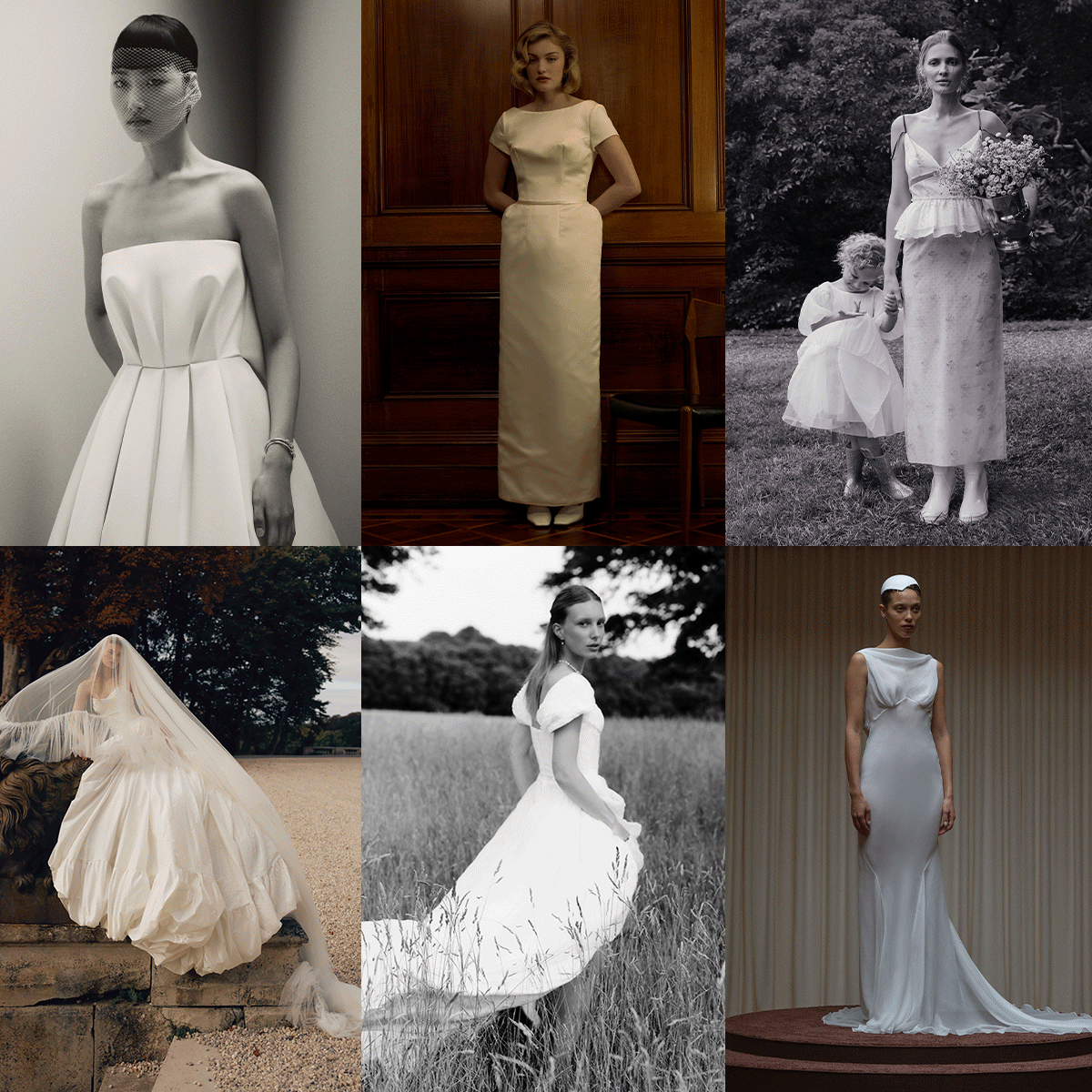 The Bridal Dress Trends You're About to See Everywhere in Fall 2026
The Bridal Dress Trends You're About to See Everywhere in Fall 2026Whether you're getting married in a château in France or a farmhouse in New York, find all of your inspiration here.
-
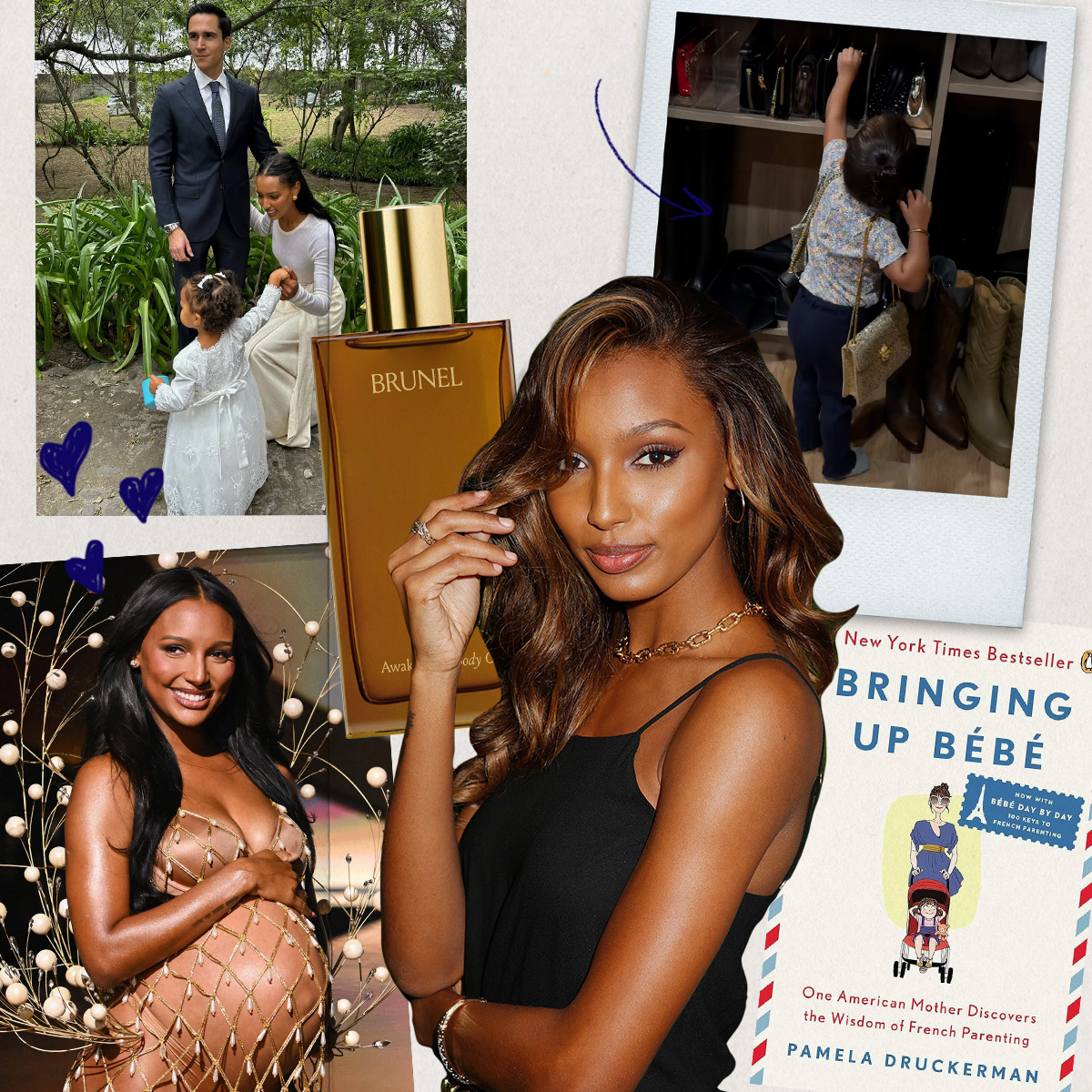 Jasmine Tookes's World: French-Inspired Parenting and the Legacy She Wants for Her Daughter
Jasmine Tookes's World: French-Inspired Parenting and the Legacy She Wants for Her DaughterPlus, what she wishes she knew before starting a family.
-
 They Said Yes—5 Dresses Real Brides Wore for Their Engagement Photos
They Said Yes—5 Dresses Real Brides Wore for Their Engagement PhotosSay yes to the dress.
-
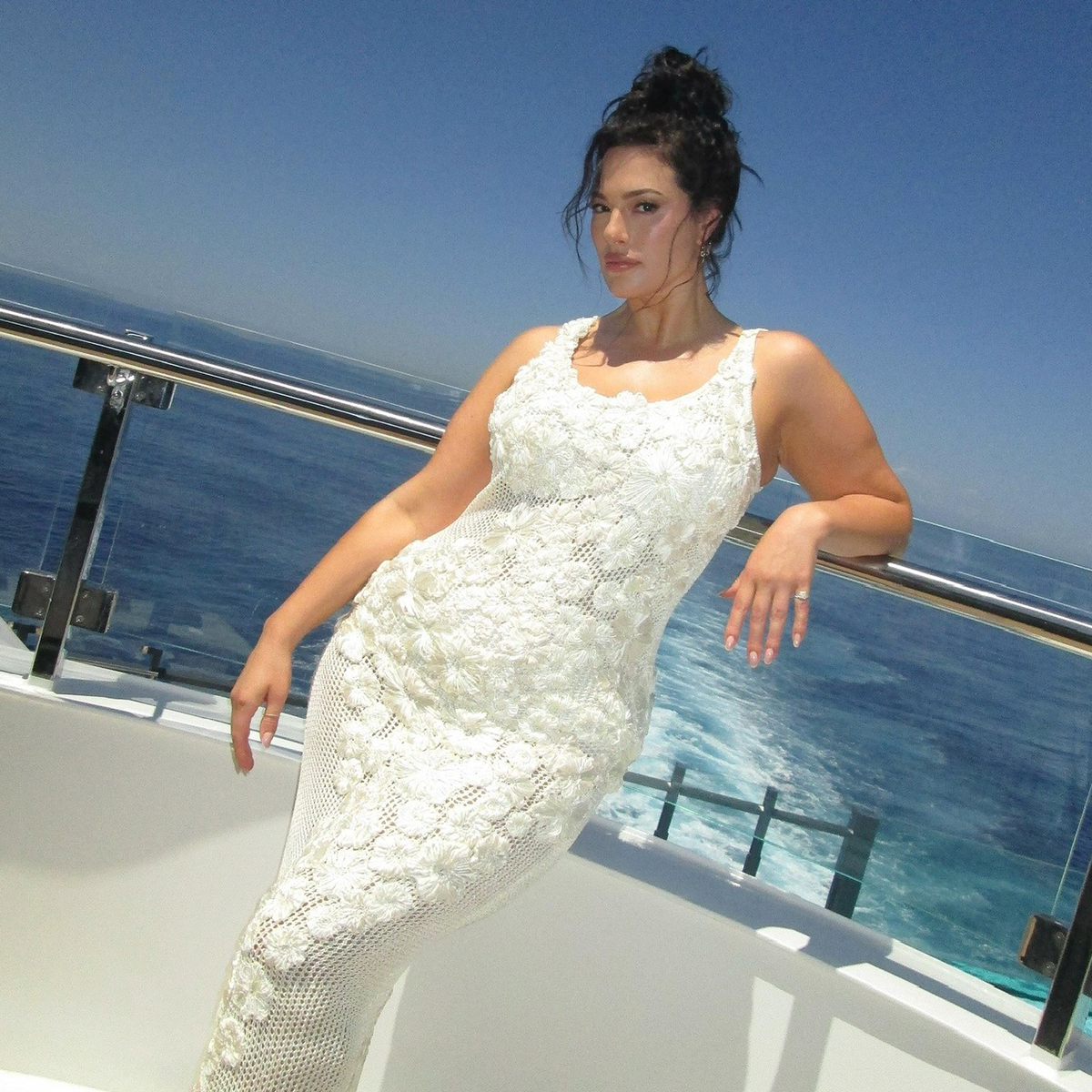 Wedding on the Calendar, White in My Cart—15 Chic Plus-Size Pieces I'm Buying
Wedding on the Calendar, White in My Cart—15 Chic Plus-Size Pieces I'm BuyingHere comes the bride.
-
 Designers Are Finally Beginning to Understand the Plus-Size Bride—Why Did It Take So Long?
Designers Are Finally Beginning to Understand the Plus-Size Bride—Why Did It Take So Long? -
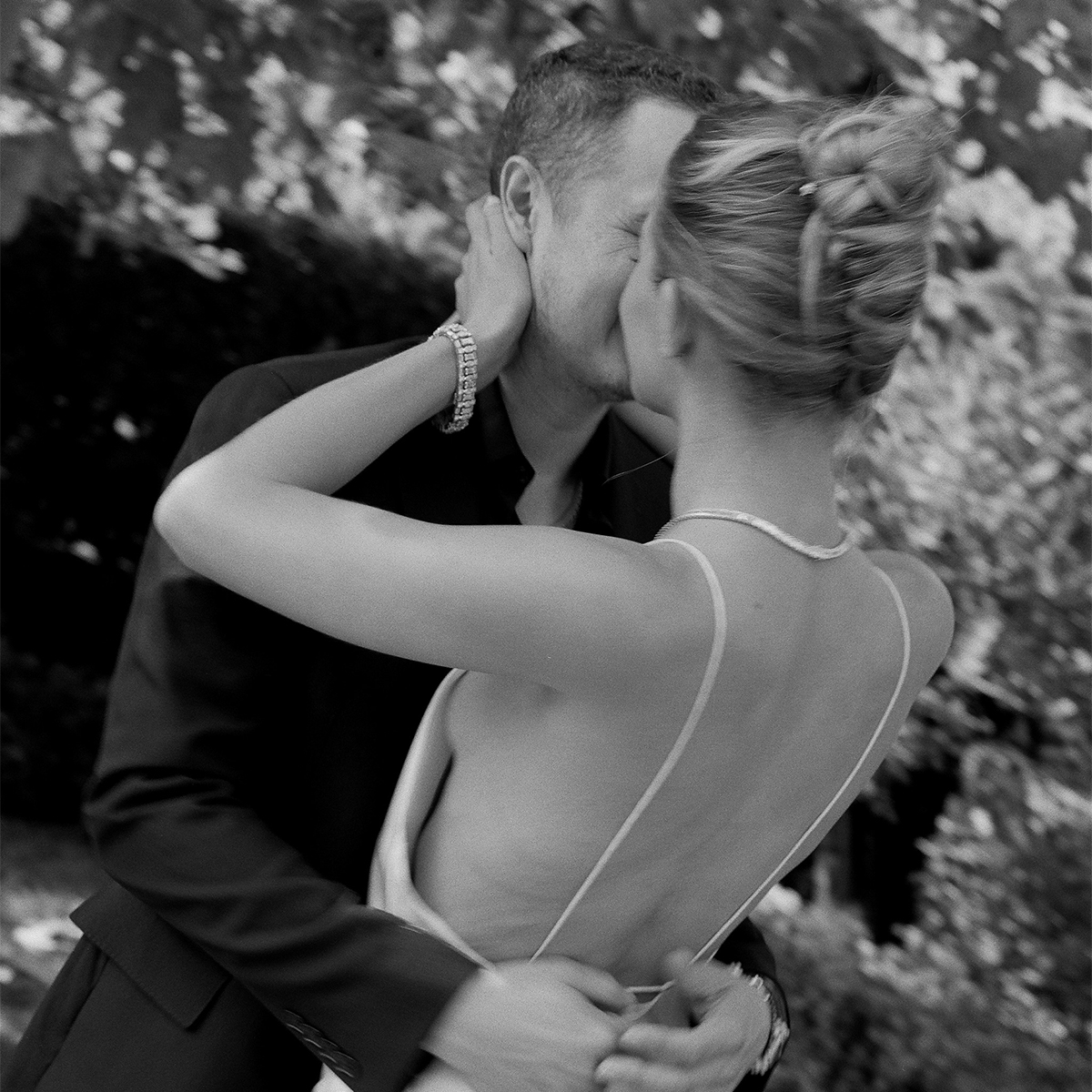 This Vintage Boutique Owner Wore Archival Calvin Klein for Her Intimate Backyard Wedding in L.A.
This Vintage Boutique Owner Wore Archival Calvin Klein for Her Intimate Backyard Wedding in L.A.It all started with an Erewhon meet-cute.
